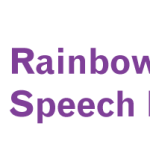Our Blogs
SPEECH SOUND DISORDERS AND DELAYS

(Image: Speech Sound Disorder Classification and Causes – ASHA)
A child who is hard to understand compared to their peers might have speech difficulties. Speech difficulties can occur due to underlying structural differences to the anatomy (e.g. cleft palate), hearing impairment, or motor/neurological disorders. However, for most children with speech sound disorders and delays (SSDs) the cause is unknown.
A child with a SSD with no known cause will usually have a phonological impairment or an articulation impairment, or sometimes both. It is important for speech pathologists to work out the type/s of SSDs as different types require different treatment approaches.
Phonological impairments
Speech is very complex process and as young children are mastering this complex task, they will usually simplify the rules to make it easier. They may use certain “error patterns” such as leaving off the end sound of words (e.g. do for dog) or using sounds that are made towards the front of the mouth (t, d) instead of the back of the mouth (k ,g) (e.g. tat for cat).
- Phonological delay: is when a child continues using error patterns consistently after the age they are expected to have resolved. Different error patterns are expected to resolve by different ages between approximately 3-5 years.
- Phonological disorder: is when a child has consistent error patterns that aren’t seen in typical speech development. Some examples of unusual error patterns include initial consonant deletion (leaving the start sound off words e.g. og for dog), backing (using sounds made in the back of the mouth instead of front of the mouth sounds e.g. gog for dog) or having a preference for using one sound for lots of sounds.
- Inconsistent speech disorder: is when a child has difficulty producing the same word the same way. Their error patterns are unpredictable which can make their speech really hard to understand.
Articulation impairment
Children learn how to produce individual sounds gradually. Some sounds develop earlier (e.g. p, b, d, t) and some sounds develop later (e.g. th, r).
- Articulation disorder: is when a child is not able to produce an individual sound because they haven’t learnt the correct motor plan (how to move what, where, when). This often is most common for sounds such as “r” and “s” (think lisps!). The sound is often distorted or substituted for another sound.
Children can have more than one type of error and more than one type of SSD. For example, a 5 year who has some unusual phonological patterns (e.g. backing, initial consonant deletion), some delayed phonological patters (e.g. cluster reduction e.g. swing to sing) AND who has difficulty making the “s” sound would have a phonological disorder (unusual and delayed patterns) and an articulation disorder (can’t produce a certain sound).
SPs can conduct thorough examinations of a child’s speech sound skills to determine exactly what is going on and how to best tailor treatment to their needs.
For more information on the typical ages of acquisition of individual speech sounds and typical ages of elimination for different types of error patterns: https://childdevelopment.com.au/resources/child-development-charts/speech-sounds-developmental-chart/
References
McLeod, S. & Baker, E. (2017). Children’s Speech: An evidence-based approach to assessment and intervention.
Bowen, C. (2011). Table 3: Elimination of Phonological Processes. Retrieved from http://www.speech-language-therapy.com/

Written by Samantha Bolton – Speech Pathologist


